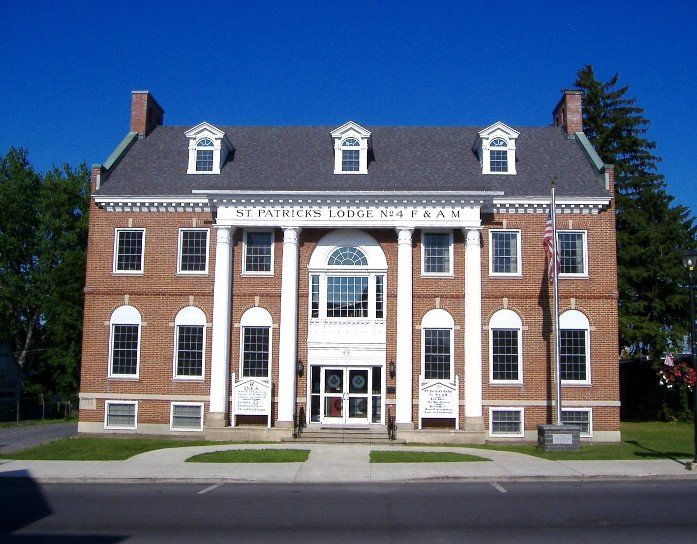 An upcoming symposium, “Frontier Style: Culture at the Edge of Empire, Mohawk Valley NY, 1700-1800” looks at clothing, furniture and household decorations to see what they can reveal about a person’s cultural and social status in colonial New York.
An upcoming symposium, “Frontier Style: Culture at the Edge of Empire, Mohawk Valley NY, 1700-1800” looks at clothing, furniture and household decorations to see what they can reveal about a person’s cultural and social status in colonial New York.
Scholars at the 2011 Western Frontier Symposium will discuss the interactions of the Mohawk, Dutch, English, German and slave cultures within this region, their traditions of costume and household design, and their perceptions of each other.
The two day symposium will be held October 15-16 at Fulton-Montgomery Community College in Johnstown, NY. Participating experts in 18th century design and the region’s cultures include Phillip Otterness, David Preston, Timothy Shannon, George Hamell, Mark Hutter, Robert Trent, Mary Elise Antoine and others.
“Frontier Style” looks closely at daily life in the 18th century Mohawk Valley, when this region was the western edge of colonial New York, a frontier space where European and Native American communities were both neighbors and trading partners.
In that diverse multicultural world, personal objects from everyday life like painted German chests or Iroquois body art revealed cultural roots and traditions. Stylistic choices also could suggest a person’s career aspirations, as when decorating exclusively with imported British goods or wearing the latest London fashions.
Symposium presentations include the basics of Mohawk Valley “dressing for success”, local fashions for every budget, regional furniture and architecture, as well as discussion of the dominant ethnic and social cultures of the period.
Admission to the symposium is $20.00 per day with a discount for advance registration. A special symposium package available by advance registration only includes admission to the presentations, printed copies of the papers, box lunches both days, a reception with the speakers and a special 18th century dinner for $135. Registration forms can be downloaded from the web link below.
The biennial Western Frontier Symposium has presented the latest scholarly research about the history and cultures of the Mohawk River Valley since 2005. It is sponsored by a collaboration of regional historic sites and organizations: Old Fort Johnson, Palatine Settlement Society, Montgomery County History & Archives, Johnson Hall State Historic Site, Herkimer Home SHS, Schuyler Mansion SHS, Crailo SHS, Fort Plain Museum, Fort Klock, Historic Cherry Hill, Old Stone Fort Museum, Fulton-Montgomery Community College, NYS Office of Parks, Recreation & Historic Preservation, and the Costume Society of America.
More information and registration forms are available online.
Papers to be presented October 15-16, 2011 include:
* David Preston – “The Texture of Contact: European and Indian Settler Communities on the Iroquoian Borderlands, 1720-1790”
* Phillip Otterness “Neither French, nor English, nor Indians: The Palatine Germans of New York”
* Erica Nuckles – “The Dutch had a very bad Opinion of Me”
* Clifford Oliver Mealy –“ Slaves in the Mohawk Valley, 1750-1800”
* Tim Shannon – ”Dressing for Success on the Mohawk Frontier: Hendrick, William Johnson, and the Indian Fashion”
* George Hamell – “Native American Body Art”
* Scott Meachum – “Native American Calling Cards: War Clubs & Pictographs”
* Mark Hutter – “High Style in the Hinterlands: 18th Century Design for the Fashionable Consumer”
* Kjirsten Gustavson – “Colonial Clothing in Upstate New York”
* Michael Roets – “18th C Mohawk Life: Lower Castle Archeology”
* Wanda Burch – “Collecting Cultures: Sir William Johnson’s Cabinet of Curiosities”
* Cindy Falk – “Mohawk Valley Architecture: Cultures Built in Stone & Wood”
* Rabbit Goody – “Household Goods: 18th Century Fabrics for the Home”
* Robert Trent – “Mohawk Valley Interiors & Furniture: The Stylish Home‘
* Mary Antoine – “German Folk Arts in Upstate New York”
* Deborah Emmons-Andarawis – “Shades of Gentility: Philip Schuyler and Philip Van Rensselaer” (sponsored by the New York Council for the Humanities)
* Ron Burch – “Music in the Johnson Family” (lecture & concert)
 I noticed that there was a report in the Leader Herald on the Johnstown Masons of St. Patrick’s lodge, so I thought this bit of history might be timely:
I noticed that there was a report in the Leader Herald on the Johnstown Masons of St. Patrick’s lodge, so I thought this bit of history might be timely:



